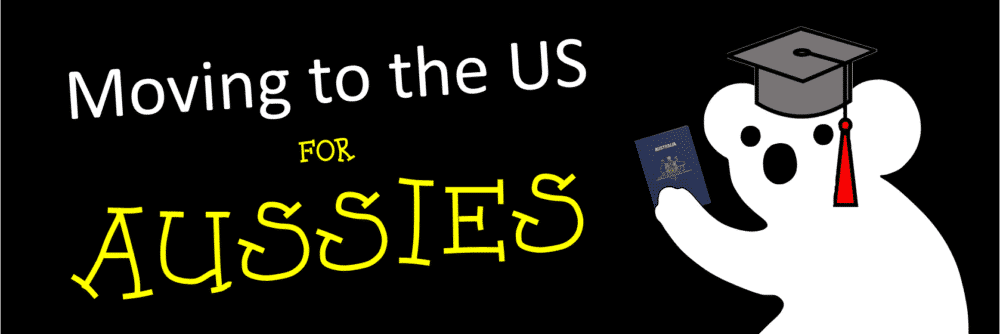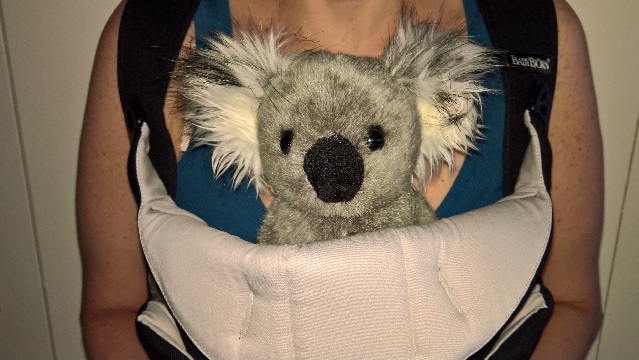What an Expecting Expat should Expect: Chapter 14

What an Expecting Expat should Expect.
Starting a family is a big step for any prospective Australian parent. Starting a family while living in the US will add an additional layer of complexity—emotionally, legally, and financially.
Before we drill down on this article, the topics covered clearly do not cover every scenario when it comes to starting a family in the US. There are a plethora of needs and wants when it comes to having a child. This article covers some of the basics and is intended to frame some of the challenges you will face, as well as the conversations you need to discuss with your spouse and close family.
“The journey of a thousand miles begins with one step”
Lao Tzu
Getting pregnant can be a huge challenge for many couples. Unlike Australia, where you may have the emotional support of dozens of family members, you may find that you and your spouse are essentially on your own – visiting Grandparents and siblings notwithstanding.
The stresses of New York can add to the frustrations of starting a family. For many couples, there is the emotional devastation of a miscarriage. Miscarriages are far more common than many think and can be for many reasons, reasons out of your control.
Only through speaking with other couples who have personally experienced miscarriages before their first child was born do you begin to understand that you are not alone in your challenges to start a family. The good news is that the US has some of the best fertility specialists in the World, with many of them in NYC.
Insurance, Insurance, Insurance
The first step before becoming pregnant is to check what your health insurance covers. Unlike Australia, where Medicare covers 100% in the public system or topping up your Health Coverage for a few hundred additional dollars a month gives you the red carpet treatment, having a baby in the US can be a very expensive exercise. Without insurance, you can accrue tens of thousands of dollars in medical bills just for a healthy delivery. Without coverage, you may not have access to certain services because they are not affordable.
As we discussed in a previous chapter on Health Insurance, a big consideration when choosing a plan where the Hospitals that are covered. The ideal situation is to have a Hospital(s) in your plan that is well-regarded for delivery. In New York, Columbia, Presbyterian, and Cornell are now one hospital system and are regarded by many as the #1 hospital system if you are having a baby.
Columbia’s Children’s Hospital on 168th and Broadway delivers around 3,500 babies each year and has one of the best neonatal care facilities in the World. It is the #1 choice for many high risk deliveries. If you live Downtown, Presbyterian Hospital in the Financial District delvers around 2,000 babies, including twins, but does not (yet) have facilities for triplets, quadruplets etc., and very premature babies. Weill/Cornell on 68th and York may be geographically desirable if you live in Midtown.
As we mentioned in the insurance article, your premiums, co-pays, percentage of costs covered/out of pocket costs and your Deductible all add up to your total health Insurance costs. Consider the costs of at least a half a dozen visits to the OB/GYN, perhaps three or more ultrasounds, multiple bloodwork workups, genetic tests, tests for preeclampsia, prenatal diabetes, various diseases – including STDs which are performed routinely – and even before you deliver, substantial medical bills could stack up quickly. You can double that if you fall into a High Risk category of pregnancy. If gynecological reproductive services are required, that $4,000 or $8,000 annual deductible is going to be met in a matter of a few weeks.
It is important to note that all mothers are entitled to free delivery services at New York Hospitals. However it would be assuming great risk to the mother and baby to go nine months without regular visits to the OB/GYN to understand the health of both mother and baby prior to delivery.
Further, there are the costs of Pediatric care immediately after delivery. Without Insurance you are going to rack up some serious medical bills.
Here is a useful link on prenatal services provided by New York State: https://www.health.ny.gov/community/pregnancy/health_care/prenatal/
Selecting an OB/GYN
Assuming you have health insurance and you have a Hospital plan, your first task will be to find an OB/GYN who is part of that Hospital’s health system. Office visits are all part of your prenatal medical costs.
Given that the OB/GYN will deliver in your Hospital, you will need to double check that they take your insurance. It is also a good idea to check out the Health Grades website to see their qualifications and any past lawsuits. If you are delivering at a top tier Hospital, you are assured that all of their doctors are of a high standard.
Competency does not always come with a bedside manner. Some more clinical practitioners can appear cold to those patients who may have some level of anxiety.
However, when it all boils down, and if you are facing a life and death situation, it is a practitioner’s medical skills and training that is important, not their hand-holding skills.
A rookie mistake is overlooking the Anesthetist. You will see delivery charges from the Hospital, the OBGYN, and the Anesthetist.
Employee Benefits (and Rights)
All pregnant women fall into a protected class on employees, and as such are entitled to Maternity Leave, and protection of employment. The New York City Commission on Human Rights has in place some of the most favorable Human Rights law in the US, protecting residents of New York.
Your Human Resources Department will advise you of your benefits once you announce that you are pregnant. This may be up to the beginning of your second trimester, but that will be your choice. Some companies offer benefits above that mandated by Federal, State and City legislation. One area to check for expecting fathers is the Paternity leave offered by his employer. Your Human Resources department will have all of the information.
Non-Medical Expenses Prior to Arrival
Medical expenses are not the only costs associated with having a baby. An important consideration is where will the baby sleep! If you have a 600 sq. ft one bedroom apartment, this is going to be a challenge. A Bassinet on wheels will suffice in most cases, but once you need a crib (cot) and a changing table, this is going to permanently occupy 20-25 square feet!
If you do have to move to another apartment, you are best to consider the public school district where you will be living. That great deal in BK may cost you another $20,000 a year (per child) if you have to pay for private school – starting at age four!
A good way to offset the startup costs of a family is a Baby Registry. When you look at just the basics: Stroller and baby seat (capsule), crib (cot) and mattress, bassinet, bedding, clothes, bath accessories, baby monitor, baby carrier, you can be up for around $2,500 or more. Then there are the consumables such as disposable diapers, baby formula, wipes, lotions, potions etc. that can run up another $100 per month.

All of the major baby store front retailers offer baby registries, however you can pay a premium above an online supplier such as Amazon for convenience.
If you do go with a registry, BuyBuyBaby is part of the Bed Bath & Beyond chain so start saving all of those 20% off coupons. Suddenly they go from junk mail to gold!
Shopping for a Stroller
Buying a stroller seems a simple process, but there are parallels to buying a car – including cost! When you are expecting, you not only begin to notice other expecting mothers but also the make and models of strollers.
In terms of bangs for bucks, Graco has a very good range of modular strollers that include the baby seat (mandatory to transport your newborn from the Hospital). The Modes 3 LX Travel System is a great selection and retails for around $400.
However, if you are planning to have three children under five years old or twins, the UpperBaby system will simultaneously transport two seated and one standing on the drop-down attachment at the back of the stroller. It does, however, come at a premium of c. $800 for the stroller frame and another $400 for the baby seat.
There are other good models, but some are purely strollers/joggers and do not offer the option of a baby capsule. If you are taking the subway frequently with baby, the CityMini and Modes 3 are highly maneuverable and have a compact footprint. Other passengers may (or may not) appreciate your forethought, but they are much more maneuverable in and out of Subway cars and elevators.
When you are ready to buy, go to a large retail store so that you can see all of the models side by side. This will give you the best idea on which stroller system meets your needs; but Buyer Beware! In stores such as BuyBuyBaby, where there may be half a dozen or so manufacturers present, each of the sales assistants is a manufacturer representative. Each is commissioned to sell its own manufacturer’s stroller, so if you ask which stroller is the best, you know that it will not be the manufacturer across from them.
Space is always at a premium in New York, so unless your stroller has a convenient parking spot in a corner of your sprawling two-bedroom apartment, test to see how compact it can fold up and if it will fit in a closet. It is also important to see how much it weighs, as lifting a stroller into the back of a taxi may be a daily occurrence, and not all subways have an elevator.
Bringing Baby Home
Naturally, we have skipped over much of the medical aspects in this Chapter, and this is deliberate. This article is not meant to give any specific medical advice, or to say that your baby’s health will be better off at one Hospital or Practitioner over another.
That said, your choice of Pediatrician will be a similar selection process to your OB/GYN based on proximity to your home, Health Grade and whether they take your Health Insurance.
Before you leave the Hospital, which may be two days for a natural delivery or three days for a Caesarian Section, you will be asked to fill out a form that is the basis for the Birth Certificate as well as an application for a Social Security Number. This should be a good time to contact your Health Insurance company to let them know that you will be adding a new dependent to your health insurance policy.

Most Health Insurers will give you thirty (30) days to notify them of a birth and, in some instances, another thirty days to update your policy. In any case, you should immediately notify your insurer as your first Pediatrician appointment will be within a few days of discharge from the Hospital, and you will need to cover the baby for his or her Pediatrician appointments.
If your new baby is not listed on your insurance, you may find it challenging to get an appointment with a pediatrician, so contact your Health Insurance company as soon as possible.
DO NOT MISS THE 30 DAY DEADLINE TO ADD YOUR BABY TO YOUR INSURANCE COVERAGE!
If you miss the deadline, you may need to wait until the end of the year when Open Enrollment begins, and you will be liable for all of baby’s medical expenses in between!
Administrative / Legal Stuff
Your little bundle of joy is now officially a Half and Haff. Filing the form for the Birth Certificate and Social Security Number, supplied by the Hospital, is the first step to applying for his Australian and US passports.
Here is the link to apply for an Australian child’s passport: https://www.passports.gov.au/passports-explained/childrens-passports
The form for an application for a US passport can be picked up at any Post Office.
You will have to wait for his or her Social Security Number and Birth Certificate to be issued before applying.
Depending on where you live, you may consider enrolling your child in Pre-K. Spaces are limited in some school districts, so the earlier you get on the waiting list, the greater your chances of being enrolled. This assumes that you will still be in the US when Junior hits school age.
It takes a Community to raise a Child
Other parents can be a great source of information. Depending on your neighborhood’s parks and children’s facilities, you may have opportunities to connect with other parents.
Information on local Pediatricians, parenting tips, discounts, shopping etc. can all be obtained from other parents – or the Nanny/Manny.
The Australian Community’s Private Network has a group named Family Friendly with nearly fifty members. It was set up specifically for parents to share and search for knowledge 24/7. You can also Instant message other members, coordinate a Play Date, or simply make a time to catch up for a coffee or cocktail—avec ou sans enfants!
Lastly, control your Sharenting
Sharenting is parents oversharing pictures of their children on social media. Notwithstanding the fact that your offspring may have won first prize in the cutest baby on the planet competition, after a dozen pictures per day for a week, your friends on Facebook are going to start to tune out.
Rule of thumb is one post per day for the first three days, and then one post each week for the first month. Thereafter, three posts in the second month, and then one post per month after that – Perhaps!
Click here to read “Moving to the US for Aussies” from the beginning,
Before you send money Overseas!
Use this Currency Converter to gauge how much money you could save over your existing FOREX service by accessing The Australian Community’s Preferred OFX Rate.
Currencies can fluctuate by the minute. This Converter is indicative of the Preferred OFX Rate at this time.
However, once you register and access our Preferred OFX Rate, you will see the current converted rate, and the converted amount before making your transfer.
About The Australian Community
Founded in 2011, we connect more Australians in America.
If you are a professional Australian taking your career to the next level, or the U.S. is the next step in your company’s global expansion, we can connect you to all of the resources you need for success in America.
Did you find this article helpful? Make a Donation!
The Australian Community is a 501(c)(3) organization, and all donations are fully tax-deductible under the IRS Code.
Join The Australian Community.
Learn more about the benefits of joining The Australian Community in America.
